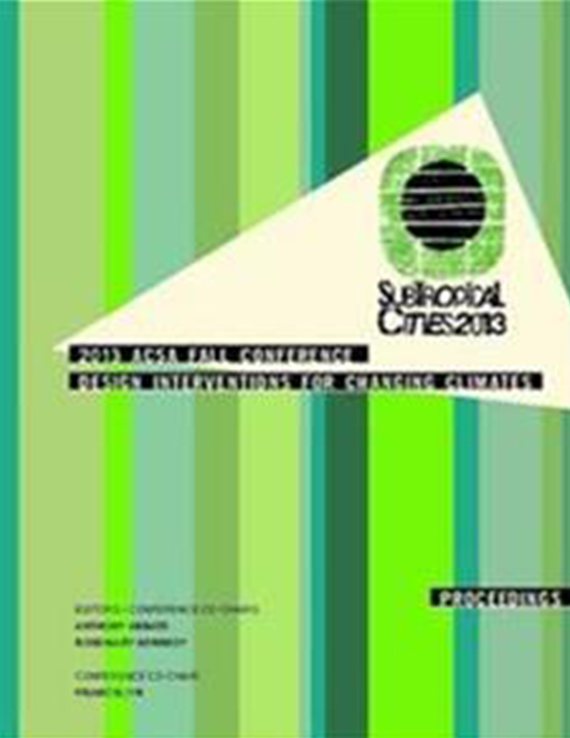Author(s): Ingalil Wahlroos-Ritter
This paper describes a field study studio that immerses students into a particular non-western culture, French Polynesia. The studio methodology, which begins with investigations into indigenous materials and traditional craft techniques, emphasizes the building skin as the focus for design exploration and spatialisation of local cultural practices, is intended to alchemically lead to an architecture of site specificity, adaptability, resilience, ecological sustainment and responsiveness to climate change. Instead of employing a design methodology that begins with an a priori intention of designing for the effects of climate change, we begin by radically restricting the palette of materials our students can use, thereby stealthily making our way into the conversation of envisioning an alternative language for an environmentally responsive architecture. Without making unsubstantiated and grandiose claims, the case studies presented here quietly and often ingeniously propose solutions that respond locally to effects of global climate change: rising sea levels, changing rainfall patterns, ocean acidification, and intensification of tropical cyclones. By deploying indigenous resources, local materials and traditional skills, the case studies redefine cultural identity and generate a hyper-specific, hyper-local architecture. STUDIOBy investigating the stuff from which architecture is made and the actions through which people filter these materials, this studio encourages students to translate physical reality of an unfamiliar non-western culture into a unique site specificity. The studio produces a hyper-local architecture using indigenous materials, deployed and transformed through traditional and digital processes. The result is an information and reformation of architecture by the materials of its place.In a location with a climate as temperate as that in Polynesia, the static concepts of enclosure, threshold, boundary and separation must be discarded in favor of ideas of fluid continuities and dynamic lines of demarcation. The traditional Tahitian concept of transitory habitat is largely derived from this tropical environment, one that causes all materials to rapidly decompose, and suggests a temporary, possibly even dissolving architecture. We struggle to come to grips with a culture that encompasses an ocean not as an impassable boundary to other cultures, but as an extension of territory, with a radically different and uniquely fluid conception of architectural space. Notions of interior and exterior are further complicated and enriched by ideas of wetness and dryness, stability and fluidity and how architecture engages vastly different surfaces. The studio program is the design of a house in the Society Islands.CONCLUSIONOur studio methodology stands in direct opposition to the belief that ecological solutions can be addressed only through global interventions and international conventions. Here, global issues of environmental degradation are addressed not through vast, generic solutions that discount local resources and cultural knowledge, but through research and propositions that are hyper-local and hyper-specific. The end results are architectural proposals that provide a particular place, one that is in direct conflict with the global processes of climate change, with an architectural design identity. This then is the paradigm shift: to engage the supra-global with a quiet, rigorous and restrained methodology and design philosophy of hyper-localism.
Volume Editors
Anthony Abbate, Francis Lyn & Rosemary Kennedy
ISBN
978-0-935502-90-9

 Study Architecture
Study Architecture  ProPEL
ProPEL 
